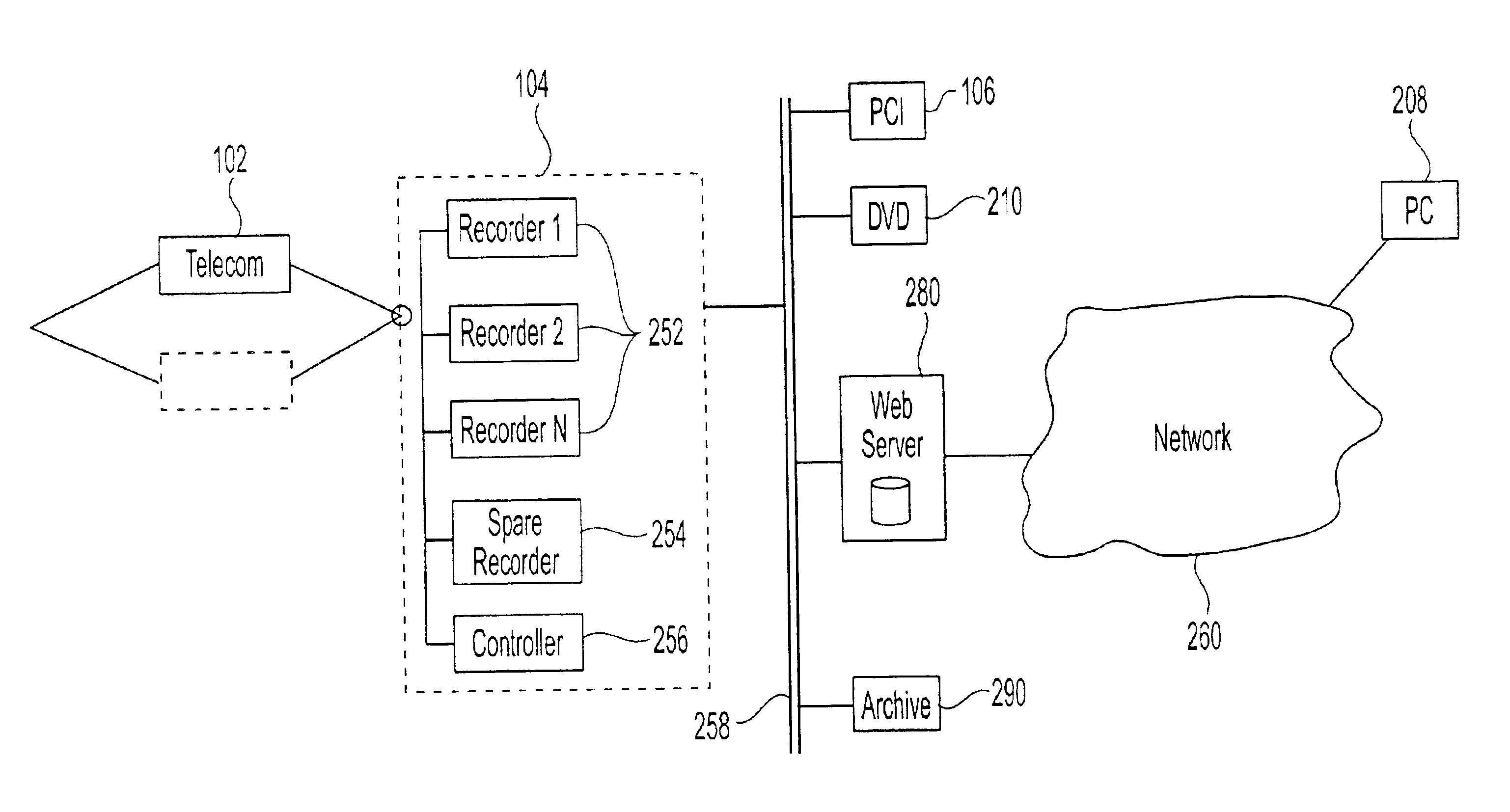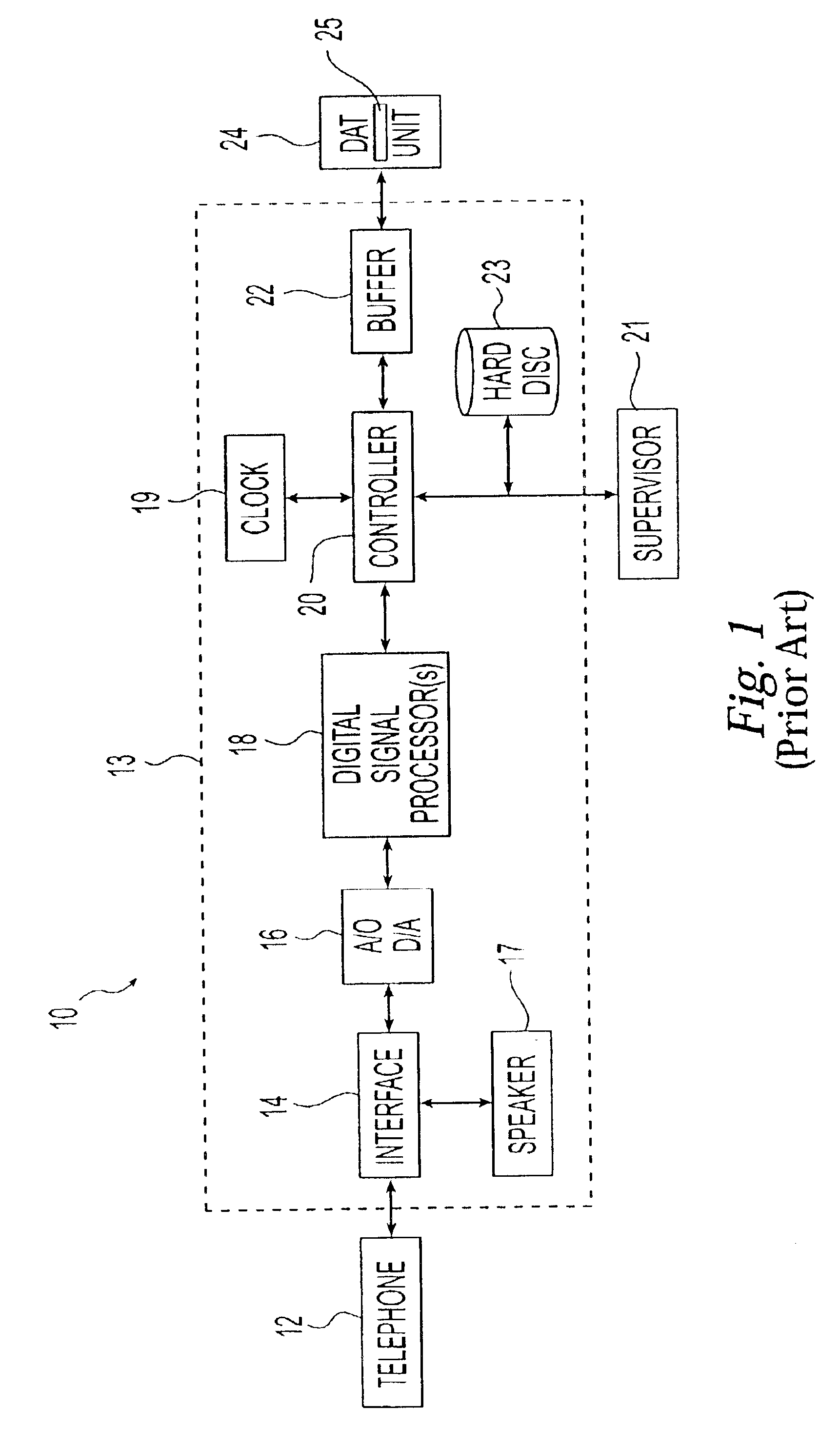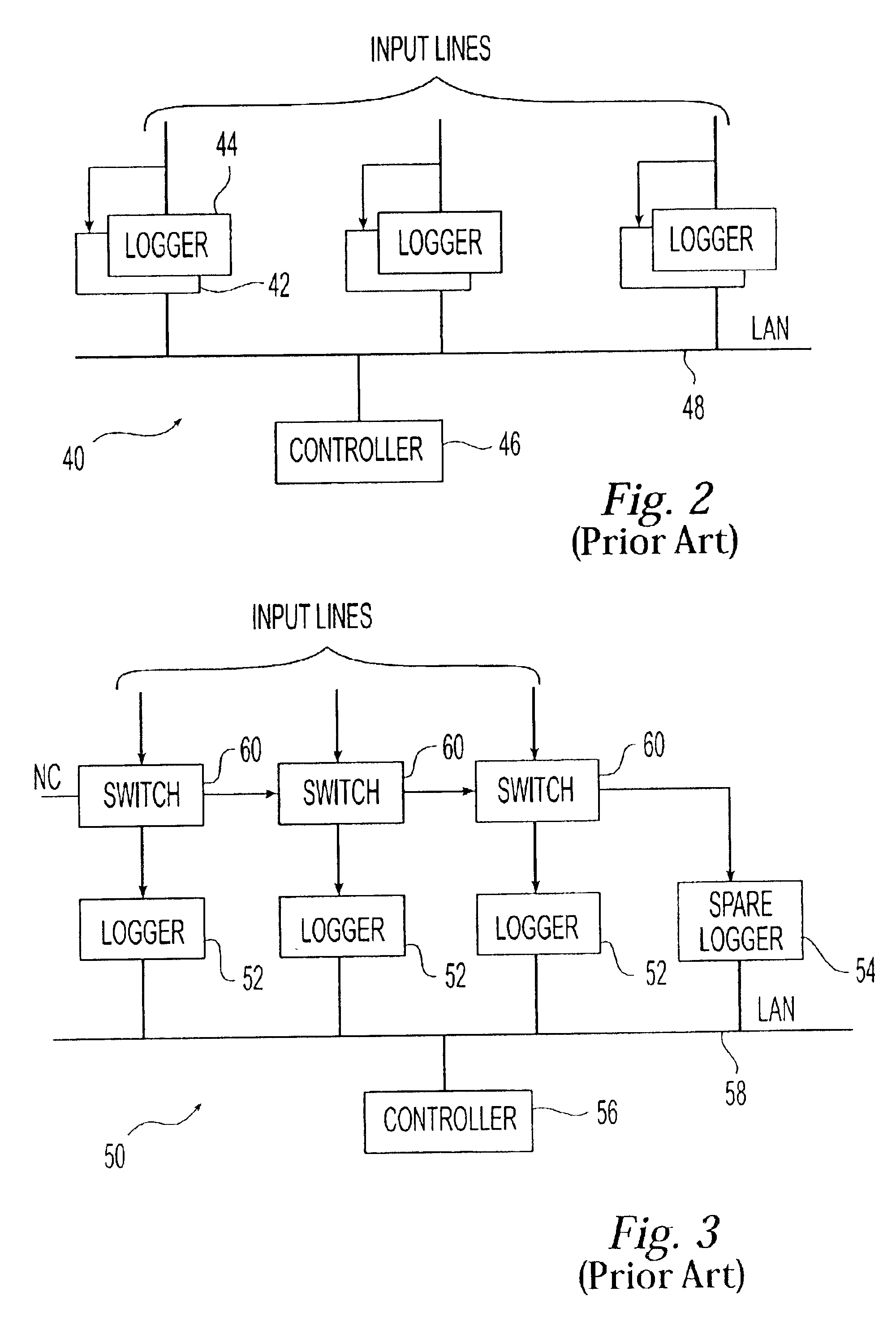System and method for multi-stage data logging
a data logging and multi-stage technology, applied in the field of data logging, can solve the problems of increasing the number of input ports, the complexity of the processing system, and the disadvantage of the prior art logger architecture, and achieve the effect of increasing the input capacity and high distribution flexibility
- Summary
- Abstract
- Description
- Claims
- Application Information
AI Technical Summary
Benefits of technology
Problems solved by technology
Method used
Image
Examples
example 1
One of the advantages of the multi-stage distributed logger of the present invention—its design flexibility—is clearly illustrated by its use in stock or commodities exchanges. Financial institutions represented at such exchanges record instructions from clients as a protection against fraud and as evidence in legal proceedings about the content of telephone conversations. Therefore, it is highly desirable that data loggers be provided to record communications between brokers at the exchange floors and their clients. As known, however, there is always a concern about the space on the trading floors. This concern is specifically addressed by the multi-stage design of the logger in accordance with the present invention, in which only the telecom stage electronics would need to be located physically on the trading floor. The recorder stage and various distribution servers of the logger could be located physically either someplace more convenient in the building, or in fact someplace el...
example 2
In this example it is shown how the multi-stage design of the data logger in accordance with the present invention can be used to create and implement new business models. Assume for example that a data logger is used by a police to monitor 911 calls in a particular area. Information about such calls is generally available to the interested public, for example the news media, but so far has been used in only a few cases primarily because of the difficulties associated with the access to such information. Using the distributed design of a logger in accordance with the present invention, however, it would be a simple matter to make such records available to the public immediately, possibly for a fee.
In particular, a Web server run by the police can store or be given access to data files corresponding to individual 911 calls. With reference to FIG. 6, an authorized user may utilize a personal computer to access the police logger over the world wide web (WWW) of the Internet at a predet...
PUM
 Login to View More
Login to View More Abstract
Description
Claims
Application Information
 Login to View More
Login to View More - R&D
- Intellectual Property
- Life Sciences
- Materials
- Tech Scout
- Unparalleled Data Quality
- Higher Quality Content
- 60% Fewer Hallucinations
Browse by: Latest US Patents, China's latest patents, Technical Efficacy Thesaurus, Application Domain, Technology Topic, Popular Technical Reports.
© 2025 PatSnap. All rights reserved.Legal|Privacy policy|Modern Slavery Act Transparency Statement|Sitemap|About US| Contact US: help@patsnap.com



